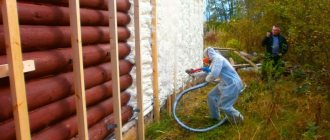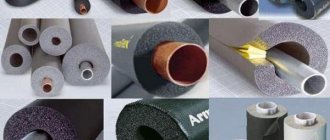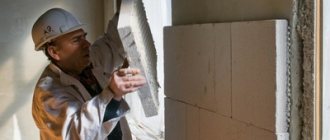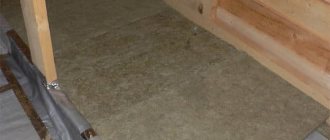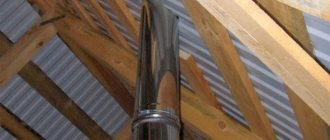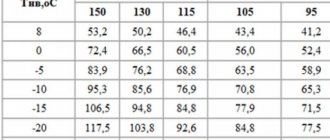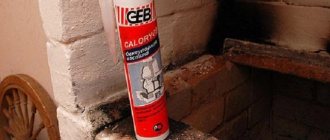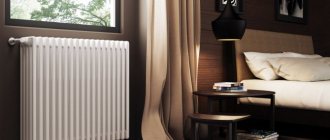About 50% of the country's total housing stock is occupied by panel apartment buildings. At a certain period of time, it was the construction of such structures that made it possible to provide housing for many citizens. The main problem of such structures is the leakage of panel joints. That is why sealing external seams in a panel house is the main task necessary for high-quality insulation of the building.
This allows you to improve the microclimate in the apartment and also reduce energy consumption. This measure helps to get rid of mold and other problems. Sealing of interpanel seams in panel houses is carried out by industrial climbers. You can carry out such repairs yourself only on the first two floors of the house.
Sealing seams during construction
Not so long ago, this work was not given much importance, because the main task was to increase the pace of construction. Many construction companies used simple tow to seal panel joints. The best option was to use rubber seals. Then the seam was covered with the usual cement-sand composition and bitumen mastic.
Since every building structure shrinks over time in the first years of construction, this often causes depressurization of the seams. The water that gets into the resulting cracks destroys the solution and opens the joint to precipitation and wind.
You can seal the seams between the panels the old fashioned way, but how long such a finish will last is a matter of several years. There are several ways to seal joints between panels in a panel house, which depend on their condition:
- In cases where the concrete filling is generally preserved, cosmetic repairs can be carried out. This method is cheap and low efficiency.
- When the main area of the seam has been preserved quite well, but some defects are noticeable, the seam is partially opened during the repair process.
- The best option is to seal the seams using the “warm seam” technology.
It must be remembered that it will not be possible to seal the joints from the inside of the apartment. The work must be carried out directly on the facade of the building.
The seams are sealed along their entire height. Otherwise, the water that gets into part of the joint will destroy the repaired area. For this reason, you should resolve this issue with your neighbors. This will be not only more reliable, but also cheaper.
The amount that will have to be paid to repair the joints of external panels is influenced by the need to order the services of industrial climbers. They are the ones who repair the facades of multi-storey buildings. Please note that lifting towers cannot be used in this case.
What is primary lubrication?
When considering the topic of preventing disruption of the expansion of seam gaps between panels and timely repair of cracks on the wall, they always talk about sealing - a necessary stage of construction or restoration work.
can be primary or secondary
Secondary sealing refers to a type of repair work that is used during the operation of the building if, upon inspection of the wall surface, deficiencies are discovered that require urgent elimination (about the repair of external seams in a panel house - here).
Primary sealing helps to reliably fasten the panels together, protect the layers of the wall pie from external negative influences from the street, as well as the room.
Ice is especially dangerous because it expands the space between the tiles and deforms the material from which the tile structure is built - this disrupts the geometry, and when the ice melts, it forms areas of dampness. Therefore, any type of panel, even monolithic, necessarily needs sealing of the joint space, which protects the building from destruction.
Primary sealing for a new house can extend the life of the walls, prevent excessive moisture formation and mold, and protect against extraneous noise and sounds. Sealing is also needed to prevent damage, protect against insects, and strengthen the joint wall space.
Secondary sealing can be used after 5-7 years
Internal sealing prevents the formation of unpleasant odors and sharp sounds in the rooms and prevents the entry of rodents. Insulated joints not only prevent heat loss, but also provide the house with stability in the event of excessive seismic activity.
Repair without opening the joint
The cheapest option is to seal the panel seams without opening them. It is better if this method is used only if the joint coating is in good condition. First, the seam is examined. Using a spatula, remove the old mastic. If the cement composition has retained its reliability, you can save money and perform cosmetic repairs. However, in most cases this solution does not lead to a better result.
Then do the following:
- The cleaned seam is treated with deep penetration primer. It is better if it contains fungal additives.
- If necessary, the damaged areas of the seam are sealed with mortar.
- Afterwards, the entire joint is covered with mastic with water-repellent properties. In the store you can find various formulations that consist of one or two components. Many experts prefer two-component polyurethane-based compounds.
The components of the solution should be mixed with a mixer. In this case, you must follow the instructions on the packaging. The front edge of each panel is covered with construction tape so that it is not stained with mastic.
Facade adhesive-sealant black
CEMMIX Facade adhesive-sealant is a special sealant based on hybrid polymers for various joints.
More details
CEMMIX facade adhesive-sealant is a high-tech modern material that has the following important characteristics:
- high adhesion;
- thixotropy;
- durability and strength;
- elasticity and flexibility;
- resistance to ultraviolet radiation, humidity, frost, temperature changes, chemicals, vibrations, mechanical damage;
- increased mechanical stability;
- resistance to the formation of mold, fungi, moss and lichens on the surface of the sealant;
- compatibility with different types of paints and varnishes;
- ability to recover after deformation.
In addition, it should be noted that CEMMIX Facade Adhesive-Sealant is an environmentally friendly, harmless material that does not have an unpleasant odor. It is easy to use, can be applied in a wide range of temperatures (including at subzero temperatures and on wet surfaces), and quickly cures under the influence of moisture from the air.
An additional advantage should be considered a wide selection of colors, because CEMMIX Facade Adhesive-Sealant is available in eight shades.
Partial seam opening
If part of the coating is damaged or there is no seal behind the cement mortar, it is necessary to partially open the joint between the panels. This method is more reliable than cosmetic repairs. The work is performed in the following order:
- First, the destroyed cement composition is removed. When opening only a certain part of the seam, you need to drill holes in it every 25 cm. In this case, you must use a 10 mm drill.
- Then the empty areas behind the plaster should be filled with foam. To do this, use a construction gun, which conveniently dispenses foam.
- After the foam has hardened, its protruding part must be cut off. The entire seam should be treated with a primer. All areas that have been exposed must be plastered.
At the final stage of work, the joints are treated with bitumen mastic.
average price
The average cost in the Russian Federation for the presented types of sealing is determined by product type, quantitative composition, purpose, and have different packaging by volume. For example, the price of any seal in rubles looks like this:
- Mastic (any type, but depends on volume):
- CJSC RASTRO (St. Petersburg) – 390.
- LLC TPK "MasticIzol" (Moscow) - 320.
- “The latest technologies” (Novosibirsk) – 430.
- Sealants:
- Stayer Master – 100-200 rub.
- TYTAN Professional – from 450 rub.
- BISON - on average from 120 rubles.
- Polyurethane foam:
- Penosil – from 350 rub.
- Soudal – from 350 rub.
- Moment - from 150 rubles.
- Tubular seal for 1 running meter. (the price depends on the diameter, the smaller it is, the cheaper the product):
- VILATERM (Moscow) - 30.
- Plant "Stroydetal" (Moscow) - 35.
- LLC “Unified Center for Waterproofing Materials” (Moscow) – 25.
Market prices for building materials are constantly changing and depend on many economic factors, as well as resource ones. It is most expensive to purchase material in the Moscow Region and St. Petersburg, and cheaper in the central zone of the Russian Federation (Vologda, Bryansk regions).
Warm seam technology
The highest quality way to seal interpanel seams is this technology. Its cost is quite high, but the result lives up to expectations. The work is carried out according to a simple scheme:
- The interpanel seam should be opened along its entire length. The old sealant must be completely removed. The entire surface of the seam is treated with a primer.
- Then the seam should be filled with foam. It must be remembered that it can triple. That is why the foam should be applied to the depth of the seam. It is necessary that it fills about a quarter of the thickness of the panel.
- When the volume of foam begins to increase, it is necessary to lay Vilaterm in the joint - this sealant is made of polyethylene.
- Thanks to this, the foam will not come out. This seal is sold as hollow tubes. However, there are often continuous options. Vilaterm can have dimensions exceeding the dimensions of the seam by 10%. It must be installed in the desired place with a spatula. It should be slightly pressed into the mounting foam.
- It is better if the Vilaterma roller is located at the same height as the outer edge of the panel. After sealing the seam, you just need to apply water-repellent mastic to it.
This technology for sealing joints today is the most effective way to repair the external surfaces of panel houses. When choosing this method, the work efficiency is the highest. The seam is insulated, becomes waterproof, and also protected from precipitation. This allows you to increase the service life of the entire house.
Sealing of interpanel seams in multi-storey structures is carried out by professionals. It is possible to conduct experiments only at the level of the first and second floors - if the scaffolding is secure. In other cases, it is necessary to call industrial climbers.
Documents required for work
Sealing of apartments above the 2nd floor is carried out using the industrial mountaineering method. That is, specialists will need free access to the roof to deploy equipment.
To do this, you need to submit an application and a package of documents to the house management organization (Dez, Tsh, Zhsk, Zhilischnik). As a rule, we deliver all the documents ourselves; only a signature is required from the owner.
We recommend: How to make a bath font with your own hands, wooden and from other materials - step-by-step instructions with photos, videos, dimensions and drawings
Package of documents:
- Application for repair of interpanel seams;
- Sample letter of guarantee for access to the roof (guarantee on behalf of our company);
- Certificate of industrial climbers.
Sealing joints from the inside
If the cold season has already arrived, and streams of air leak through the joints, it is necessary to take urgent precautions. They are usually temporary. This is explained by the fact that sealing seams from the inside is the wrong approach to work. After rain, moisture accumulates in the cracks and contributes to the rapid destruction of the sealant, no matter how reliable it is.
If the gap is not sealed, it will blow out and the moisture will evaporate. When the seam is sealed, water will remain in the gap much longer, since the joint is not ventilated. The consequences can be dire.
The same applies to insulating the wall from the inside. When choosing this method, the dew point, which should be in the middle of the panel, is shifted to the inner surface of the wall. As a result, streams of water will constantly form between the insulation layer and the interior finishing of the wall surfaces. Moisture will quickly destroy the nearby floor covering. Sealing the seams on the outside will help avoid these consequences.
Features of the work
Insulation of interpanel seams, in addition to strict adherence to technology, requires taking into account a number of features. Repairs are carried out only if the average daily temperature is at least +5°C. Other weather restrictions include strong wind, fog and precipitation (snow, rain).
It is also necessary to take into account that sealing seams falls into the category of work at height, and therefore can only be performed by specialists with permits, licenses, special equipment and practical experience.
What materials to use
The gaps between the plates are filled using Polymerfex polyurethane foam. If the Vilaterm tubular type insulation material is selected, it must be laid in bitumen pastes or mastic.
You can moisture-proof the insulation with mastic. It is applied outside the joints. The mastic will protect the insulation material not only from moisture, but also from sunlight. On each side of the seam, the mastic should cover the panel by 3 cm.
Methods of protection
Before you begin waterproofing work, you need to choose the appropriate method
It is important to take into account some criteria:
it is important to determine the depth and width of the seam; take into account possible loads on it; take into account the peculiarities of the construction of the building and its subsequent operation.
Seam waterproofing can be carried out during the construction of the structure, during operation, as well as during repair work. During the construction of a structure, certain types of seam sealing work are carried out:
- a special membrane is formed at the seam site;
- waterstops are carefully fixed;
- the seam is filled with sealant;
- A special elastic tape is fixed on the structure to improve the quality of sealing.
During the operation of the building, as well as during repairs, certain work is envisaged to improve the quality of seam insulation and prevent depressurization.
The seams are filled with special sealants or similar materials with increased elasticity. Seams are also filled using acrylic or polyurethane resins. For this purpose, the injection method of waterproofing is used. Then elastic bands and waterstops are carefully secured to the joints.
Useful tips
In old apartments, with the constant destruction of insulation, mold begins to develop on the walls. For this reason, mold areas are treated before resealing is performed. This work is performed in the following order:
- the contaminated area is cleaned;
- dried by natural ventilation for three days or using a heat gun;
- treated with biocide;
- covered with finishing materials with antiseptics.
The walls of old buildings, into which fungi have penetrated quite deeply, are very difficult to “cure”. Therefore, it is better to hire a construction team that will process and clean the surface in accordance with technology.
Why do you need insulation?
External walls in panel buildings, as a rule, are a three-layer structure. On the inside and outside there is reinforced concrete, between which insulation is installed. The panels themselves reliably protect from the cold, but the seams between the plates are blown by the wind and are a traditional bridge of cold. Even if the seam is well sealed, but the house is not insulated, the apartments lose their temperature.
In cases where the insulation is performed poorly, problems may arise:
- insufficient heat in the apartment, provided that the radiators are hot;
- freezing of internal walls opposite the seam;
- formation of condensation and fungus;
- destruction of the finish - wallpaper comes off most quickly, paint and decorative plaster will last longer.
Due to the fact that the seam is not sealed, rainwater will get into it, which will lead to the destruction of the main walls and constant dampness in the apartments. There are cases when the interpanel seams are poorly insulated and poorly sealed on both sides. Accordingly, this has a bad effect on comfort and warmth in residential areas.
It’s not difficult to understand that you need to insulate the seams. The following signs can help identify the problem:
- uneven temperature of the inner wall - if it is colder in the area where the interpanel seam is visible from the outside, then it is clear that its sealing is poor;
- the decoration falls off the walls, and the room is constantly damp;
- On the façade of the building, insulation that has come loose from the seam or its complete absence is visible.
conclusions
Thermal and waterproofing of panel joints in old houses should be carried out in accordance with the “warm seam” technology. This will protect the wall from further destruction, as well as create favorable conditions in the apartment. It is better if the wall is treated over a large area at once, otherwise after a few seasons moisture may destroy part of the repaired surface.
When it is necessary to make temporary repairs, it is permissible to perform cosmetic finishing of the walls or partially insulate the seams. This will help prevent further damage to the walls. It is not recommended to seal cracks from the inside. This is not only wasted money, but also an additional reason for moisture to stagnate in the joints between the panels.
You can figure out how to seal the seams on the outside of a panel house by following the instructions for the “warm seam” technology. However, all work at height is carried out by industrial climbers. This will allow you to do the work better and protect yourself from possible injuries.
Recommended Posts
Heat exchanger for the chimney
Calculation of house ventilation
Natural ventilation in the garage
Layout diagram of a Dutch oven with a stove
Lining the stove in the bathhouse with bricks
How to remove a ventilation pipe through the roof
In what cases is it necessary to seal interpanel seams in a multi-story building?
If you observe these factors, you need to immediately start sealing the seams. Otherwise, an unpleasant odor, humidity and mold, which has a detrimental effect on human health, will constantly be present in the apartment. The seams should be treated both externally and inside the house between the walls of the apartments. Previously, rubber or tow was used to seal seams in a panel house. There are now many different sealants that make sealing work easier. It is worth knowing that you need to use only elastic means so that when the slabs shrink and “movement,” the seam will hold firmly. And one of the most popular sealants is Neomid Mineral Professional.
Why do you need to seal the space between the slabs?
Particularly important is the external filling, which fills the gaps between the vertical and horizontal slabs.
The primary coating is suitable for all types of slabs involved in the formation of load-bearing and partitions: monolithic, self-supporting, sandwich panels, wooden and even metal insulating wires.
Re-lubrication of the seam space will be required in the following cases:
- Incorrect drafting of a construction project.
- Significant violations of the construction process technology regulated by SNiP and SN.
- Displacement of panels due to improper installation, which results in improper shrinkage of the structural part of the wall.
- Deformation of panels due to harsh climate (temperature changes, prolonged precipitation) and destructive external mechanical factors.
- Incorrect execution of stages of the construction process.
- The use of low-quality consumables, as well as products with different elasticity that are incompatible with each other.
- Strong tension on self-adhesive sealing tapes (cable leading to destruction of the cement composition).
- Low quality concrete from which the slabs are made.
The main regulatory rules applied in work when sealing panel seams are:
- SNiP 3.03.01-87.
- CH 420-71.
- TR 196-08.
- VSN 40-96.
- VSN 19-95.
The following factors lead to the consequences of a lack of tightness:
- Conscription training.
- Freezing of walls.
- Wet corners.
- Mold formation.
- Lack of sufficient heat.
- Low acoustic and sound insulation.
Sealing the seams of the primary or secondary plane after preparing, joining and cleaning the space is carried out using:
- polyurethane foam;
- Vilaterm type insulation;
- sealing mastics.
Sometimes it is allowed to fill the seams with construction adhesive, cement mortar and sand of resistant brands of Portland cement (for example, M500). But in practice, inclusion can be carried out simultaneously with several substances. The main thing is that small voids are filled.
Detection of defects requiring insulation and sealing is carried out visually, as well as with the help of industrial devices - thermal imaging cameras that identify areas of the wall with heat losses.
How and with what to seal the joint between the panels so as not to crack
Now let’s look at how to ensure that sealed interpanel joints do not crack and spoil the finish. Such cracks are especially unpleasant on painted ceilings; they are not visible under the wallpaper, although severe cracks can tear the wallpaper.
Crack between panels in the ceiling
The first is to seal the joints between panels with silicone or polyurethane caulk (which is specifically designed to seal joints) instead of insulation.
Apply plaster on top and reinforce with serpyanka mesh. Let's take the most durable plaster, for example, Fugen or Perlfix glue (Knauf). You can use cement-sand mixture M300 or tile adhesive.
Firstly, be sure to reinforce all joints between the panels with serpentine mesh and seal them with plaster - this will partially protect the seam from cracks.
Results
I am glad that recently more and more residents have begun to realize that with high-quality work on sealing and insulating seams, they will receive comfortable housing without mold and mildew.
from - Assol this is a 15-year warranty on materials, fixed price: from 450 rubles / meter, permanent specialists. As a result: we eliminate moisture from the street, heat loss through cracks and cold spaces; we eliminate the causes of condensation on the walls; we treat problem areas with mold and mildew; improving...
